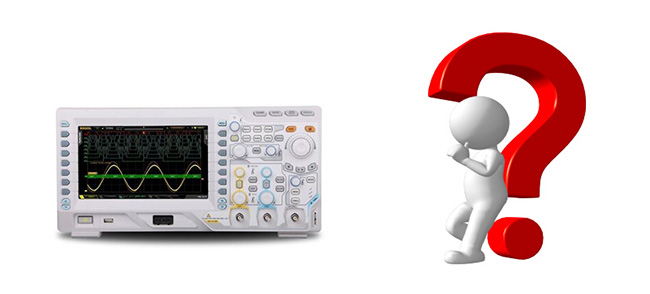How to Choose a Suitable Oscilloscope?
Tue, Aug 23 by ATO.com
An oscilloscope, a benchtop instrument, graphically displays electrical signals and shows how those signals change over time. They are used by engineers to troubleshoot circuits and check signal quality. Most engineers use digital oscilloscopes. Digital oscilloscopes are used to acquire and store waveforms, display the voltage, frequency, noise portion of the signal, detect whether the signal is distorted, the time interval between signals, etc.
But when it comes to choosing an oscilloscope, how do you know which oscilloscope is right for you? The following 7 factors need attention.

- Oscilloscope Bandwidth. The system bandwidth determines the oscilloscope's ability to measure the signal. Specifically, it determines the maximum frequency that the instrument can accurately measure. Bandwidth is also a key factor in determining the price of an oscilloscope.
- Oscilloscope Rise Time. Rise time describes the useful frequency range of an oscilloscope, a key measurement in the digital world. Because when measuring digital signals such as pulses and steps, rise time is usually a consideration.
- Oscilloscope Sample Rate. The sampling rate of an oscilloscope is similar to the frame rate of a movie camera. It determines how much waveform detail the digital oscilloscope can capture.
- Channel Density of Oscilloscope. Digital storage oscilloscopes acquire analog channels for storage and display. In general, the more channels, the better, although adding more channels will increase the price of the oscilloscope.
- Triggering Capabilities of Oscilloscope. All oscilloscopes offer edge triggering and most offer pulse width triggering. To take full advantage of the scope's record length, look for scopes that provide advanced triggering for more challenging signals.
- Oscilloscope Waveform Capture Rate. The waveform capture rate is expressed as waveforms per second (wfms/s) and refers to the speed at which the oscilloscope acquires the waveform. The waveform capture rates of digital signal oscilloscopes vary widely, so it's important to find one that's right for your application.
- Compatible Oscilloscope Probes. A good measurement starts at the probe tip. The oscilloscope and probe work together as a system, so be sure to consider the probe when choosing an oscilloscope. When making measurements, the probe actually becomes part of the circuit. Introduce resistive, capacitive, and inductive loads that alter the measurement results. To minimize this effect, it is best to use probes designed for use with scopes. Choose passive probes with sufficient bandwidth. The bandwidth of the probe should match the bandwidth of the digital oscilloscope. A wide range of compatible probes will allow you to use the range in more applications.

